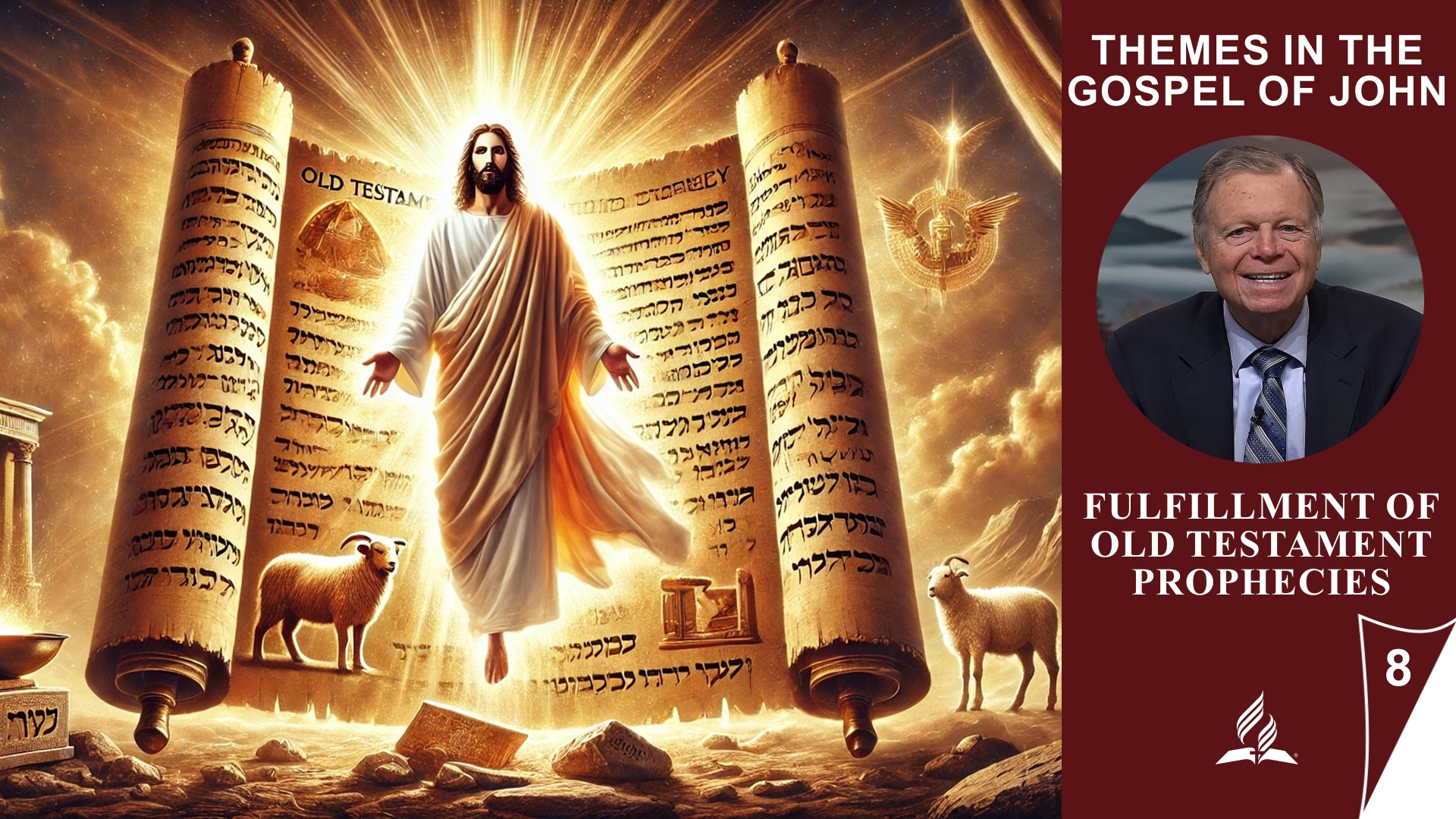
Series JESUS IN THE GOSPEL OF JOHN with Pastor Mark Finley |
Lesson 8.Fulfillment of Old Testament Prophecies |
Jesus Christ: The Fulfillment of Divine Promises |
Lesson 8 examines how the life, ministry, and sacrifice of Jesus fulfilled Old Testament prophecies and revealed Him as the promised Messiah. The Gospel of John clearly demonstrates that Jesus’ miracles and signs were not merely supernatural acts but divine indications of His identity. Furthermore, Jesus emphasized the authority of the Holy Scriptures to reveal the truth about Himself. Nevertheless, His messages, especially among the religious leaders, were met with rejection—a tragedy that highlights human blindness to divine truth. This lesson calls us to take Scripture seriously, strengthen our faith in it, and accept Jesus’ invitation to eternal life.
Memory Text: John 5.36 – “ ‘But I have a greater witness than John’s; for the works which the Father has given Me to finish—the very works that I do—bear witness of Me, that the Father has sent Me’ .”
Content:
8.1 Signs, Works, and Miracles
Evidence of the Messiah
The signs, works, and miracles of Jesus are central proofs of His identity as the Messiah, not only due to their spectacular nature but also because of their deeper significance. John emphasizes that these acts are not merely supernatural sensations but divine confirmations that Jesus was sent by the Father. The close relationship between Jesus and God, reflected in these signs, shows that they work together: “The works I do in my Father’s name testify about me” (John 10:25). Despite these clear evidences, the faith of many people—particularly the religious leaders—remained closed. This rejection calls us to examine our own hearts: Are we willing to acknowledge God’s work, or do we let pride and doubt guide us?
8.2 The Authoritative Role of Scripture
Foundation of Faith
The Holy Scriptures, especially the Old Testament, are an indispensable testimony to the identity and mission of Jesus as the Messiah. Jesus Himself repeatedly referred to the Scriptures to explain His actions and point people to the divine purpose foretold within them. In John 5:39–40, Jesus emphasizes that the Scriptures testify about Him, yet people’s faith often remains lacking. John illustrates in his Gospel that the fulfillment of Old Testament prophecies in Jesus’ life is a central proof of His divine mission. This clear anchoring in Scripture urges us today to view the Bible as the authoritative foundation for our faith and actions. In the face of modern doubts and influences, it is even more important to maintain our trust in the divine inspiration and truth of the Holy Scriptures.
8.3 Old Testament Prophecies of Jesus: Part I
Fulfillment of Divine Promises
In His discussions with the religious leaders, Jesus emphasized the authority of the Holy Scriptures to clarify their significance as testimony to His identity. Although the leaders acknowledged the Scriptures, they refused to recognize Jesus as the fulfillment of their prophecies. John shows in his Gospel how the Old Testament—such as Isaiah 40:3 in John 1:23 or Psalm 69:10 in John 2:16–17—directly points to Jesus. These Old Testament prophecies are fulfilled in His life, death, and resurrection, for example in John 19:36 (cf. Numbers 9:12). However, the disciples only fully recognized the extent of these fulfillments after Jesus’ resurrection. This understanding calls us to take Scripture as divine revelation seriously and seek the truth about Christ within it.
8.4 Old Testament Prophecies of Jesus: Part II
Proof of His Messianic Mission
Jesus fulfilled numerous Old Testament prophecies that confirm His identity as the promised Messiah. John emphasizes these fulfillments in his Gospel to show that Jesus was not randomly or humanly calculated but divinely ordained. For example, John 12:13 references Psalm 118:26 and John 12:14–15 references Zechariah 9:9 to demonstrate how precisely Jesus’ entry into Jerusalem fulfilled Scripture. Similarly, John 13:18 (Psalm 41:10) and John 19:37 (Zechariah 12:10) point to His suffering and death, which were prophetically foretold. Such precise fulfillments support the belief in Jesus as the true Messiah. For believers, this is an invitation to delve deeper into Scripture and base their faith on it, enabling them to defend it confidently and convincingly.
8.5 From Beneath
Human Blindness and Divine Truth
The conversation between Jesus and the religious leaders in John 8:12–30 reveals a deep spiritual division. While Jesus proclaimed Himself as the Light of the World, the leaders were blinded by pride, traditions, and human philosophies. Jesus explained that they neither knew Him nor the Father, even though they should have (John 8:19). Their religiosity was superficial: outwardly pious but inwardly unbelieving, as Isaiah 29:13 had already predicted. The core of their rejection lay in the fact that they were “from below,” whereas Jesus came “from above” (John 8:23). This conversation teaches us that genuine faith requires a heartfelt connection to God, not just external rituals. To be “from above,” we must align our lives with Christ and be guided by His Spirit rather than relying on human rules.
8.6 Summary
Living from a Heavenly Perspective
Lesson 8 emphasizes how Jesus, through signs, miracles, and the fulfillment of Old Testament prophecies, was revealed as the promised Messiah. John shows that these miracles were not merely impressive acts but divine indications of Jesus’ unique relationship with the Father. The Old Testament Scriptures played a central role, containing numerous prophecies about Jesus’ life, death, and resurrection, which were precisely fulfilled. Nevertheless, many religious leaders rejected Jesus because they were trapped in their traditions and spiritually “from below.” The lesson urges us to value the Holy Scriptures as the foundation of our faith and to be open to God’s truth so that we can live “from above.” Faith requires more than outward piety—it demands a genuine heartfelt connection to Christ.
Visited 40 times, 1 visit(s) today






